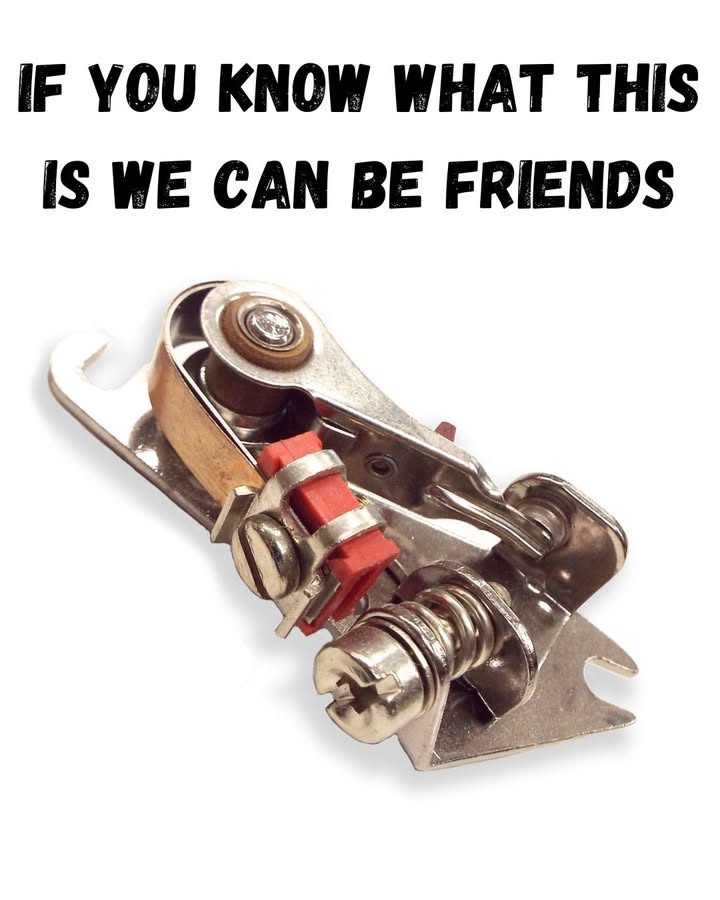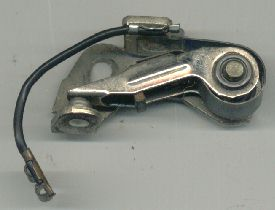Only the True Hands-On Legends Will Recognize This Instantly — Are You One of Them?
If you grew up with your hands buried in grease, wrench in one hand and curiosity in the other, there’s a good chance this little mechanical marvel brings back a flood of memories. It’s not flashy. It’s not high-tech. But it sure got the job done for decades. We’re talking about the contact breaker — the heart of the ignition system in old-school cars and motorbikes.
Now, here’s the real question… Are you one of the legends who can recognize it instantly? Or are you just here to learn about one of the most overlooked but essential parts of mechanical history?
Let’s pop the hood on this iconic device.

What Is a Contact Breaker, Really?
A contact breaker, often called “the screw” in some garage circles, is a small but mighty part of a traditional mechanical ignition system. Before the era of electronic ignitions and engine control units, the contact breaker was what made the magic happen.
Mounted inside the distributor, this mechanical switch opens and closes in perfect timing with the engine’s rotation. As the camshaft spins, it nudges the contact breaker open and closed. This action interrupts the flow of current in the ignition coil — and that interruption is exactly what generates the spark to fire your engine.
It’s raw, it’s mechanical, and it’s brilliant.
Video: Contact Breaker Point Working #shorts
The Spark of Life: How a Contact Breaker Works
Here’s where things get interesting — the contact breaker doesn’t produce the spark directly. Instead, it controls the timing of the spark. Think of it like a conductor in an orchestra, telling the ignition coil when to send a jolt of high-voltage electricity to the spark plug.
When the breaker points are closed, current flows through the ignition coil, building up magnetic energy. As the cam rotates and the points open, that energy collapses and is discharged as a high-voltage spark sent to the spark plug. That spark ignites the air-fuel mixture in the combustion chamber — and boom, your engine fires.
No computer. No sensors. Just gears, metal, and timing. Beautifully simple.

Why the Contact Breaker Mattered So Much
In the world of old motorcycles and classic cars, the contact breaker was as essential as oil in the engine. It was cheap, repairable, and reliable — as long as you kept it properly adjusted.
Here’s why it stood out:
- Precision Timing: A well-tuned breaker ensured your engine fired at exactly the right moment.
- Easy to Maintain: Unlike today’s sealed systems, you could file the points, replace the spring, or adjust the gap with just a feeler gauge.
- No Electricity? No Problem: These systems didn’t rely on fancy electronics, just basic mechanical motion and physics.
- True DIY Spirit: You didn’t need a laptop to diagnose engine issues — just a good ear, a steady hand, and a timing light.

The Downside: Why Contact Breakers Faded Out
As much as old-school gearheads loved them, contact breakers had their limits.
- Wear and Tear: The mechanical parts wore out or burned over time, especially the contact points.
- Frequent Adjustments: To keep everything running smoothly, you had to check and set the breaker gap regularly.
- Performance Drops: At higher RPMs, the system became less reliable due to point bounce and timing inaccuracies.
When electronic ignition systems came along in the 1970s and 80s, they offered cleaner sparks, better fuel efficiency, and less maintenance. Slowly but surely, the contact breaker became a relic of the past.
But to true enthusiasts? It never really disappeared.
Tuning Tips: Bringing Contact Breakers Back to Life
If you’re working on restoring a classic ride or just want to feel the mechanical soul of an engine, tuning a contact breaker is a rite of passage.
Here’s how to do it right:
- Clean the Points – A tiny bit of corrosion or dirt can ruin your spark.
- Set the Gap – Use a feeler gauge to set the correct distance between the contact points. Too tight or too loose, and timing is thrown off.
- Check the Dwell Angle – This measures how long the points stay closed. Use a dwell meter if you’ve got one.
- Timing Light Magic – Once the gap is perfect, use a timing light to align your spark perfectly with top dead center.
The whole process feels more like an art than a science — and that’s the beauty of it.
Video: Contact breaker point working in slow motion #youtubeshorts #garage #honda #maintenance #restoration
Legends Don’t Die: The Contact Breaker’s Legacy Lives On
You won’t find a contact breaker in your modern fuel-injected, ECU-governed vehicle. But in garages, bike sheds, and vintage car clubs across the world, these little mechanical switches are still very much alive.
They remind us of a time when engines had character, machines demanded respect, and drivers were also mechanics. A time when every turn of the key had a story behind it.
So, the next time someone points to that little metallic “screw” in the distributor and asks what it is — you’ll know. And maybe, just maybe, you’ll smile a little.
Because only the true hands-on legends recognize it instantly.
Are you one of them?
Conclusion: A Nod to the Screw That Started It All
The contact breaker might be simple by today’s standards, but its contribution to the evolution of internal combustion engines is nothing short of legendary. It gave spark to generations of engines and helped define what it meant to be a true gearhead.
Whether you’re restoring a classic, passing down knowledge to a young enthusiast, or just reminiscing about the good old days, the contact breaker deserves a place of honor.
It’s more than just a part — it’s a piece of living mechanical history.
